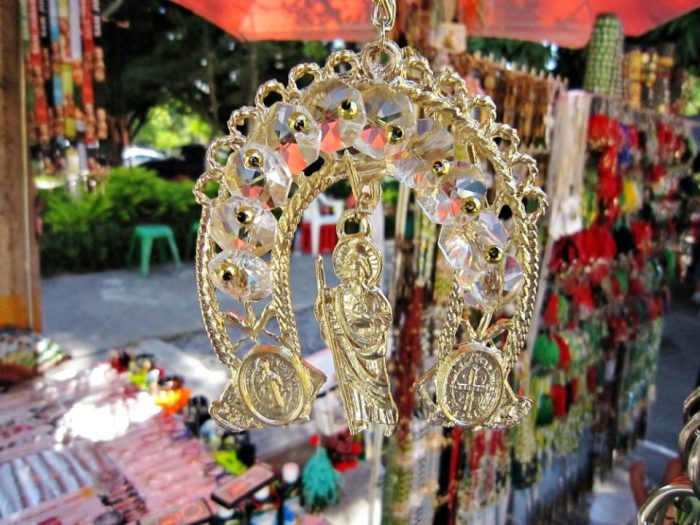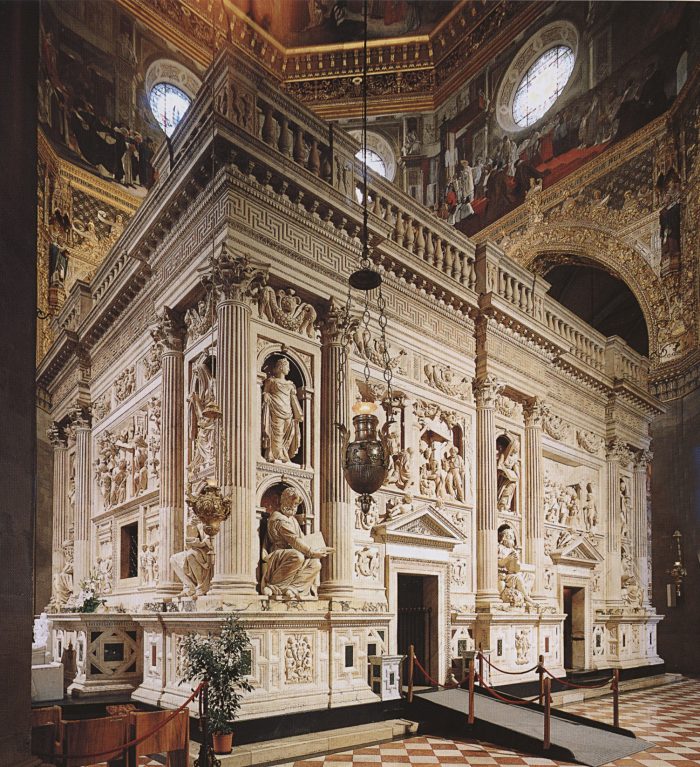Why are some Roman Catholics so willing to look at the United States as the basement of human flourishing but then turn a blind eye to the variety of cults that surround local saints and their relics? A couple years ago, a battle was raging between two saints — St. Muerte vs. St. Jude Thaddeus — that had broad support among the people (think populism):
The Vatican takes a far less rosy view of the cult, which it sees as a deeply threatening presence in the country with the world’s second-largest Catholic population. In 2013, a senior church official said worshiping Santa Muerte was a “degeneration of religion.” Three Catholic bishops in the United States also denounced the folk saint in February.
Yet despite the church’s stance, Santa Muerte is currently the fastest-growing new religious movement in the Americas, according to Andrew Chesnut, chair in Catholic studies at Virginia Commonwealth University and the author of Devoted to Death: Santa Muerte, the Skeleton Saint.
“The fact that Santa Muerte is the nonjudgmental folk saint who accepts everybody regardless of their station in life, regardless of their social class and regardless of their skin color is really appealing in a country like Mexico, where the gaps between rich and poor are some of the greatest in the world,” he said.
According to Chesnut, Mexico City’s St. Hippolytus Church responded to the explosive growth of the monthly Santa Muerte rosary service in the capital by organizing a special Mass in honor of St. Jude Thaddeus on the 28th of each month. These monthly celebrations drew impressive crowds and quickly expanded to other parts of the country.
“St. Jude Thaddeus is the only Catholic saint in the world who now basically has a monthly feast day,” Chesnut said.
Typically depicted in a green cloak with a flame above his head and a wooden club in his hand, St. Jude Thaddeus was one of Jesus Christ’s 12 apostles.
Much like Santa Muerte, the canonized saint’s popularity is tied to his reputation as a powerful miracle worker. For centuries, believers were wary of invoking him because of the similarity between his name and that of Judas Iscariot, Christ’s betrayer. Yet according to tradition, the forgotten saint became a powerful intermediary, eager to assist those in need.
“Word has spread that St. Jude can help you with your most pressing problems,” said Guadalajara-based priest Fr. Juan Carlos López. “Because of that, the devotion has grown.”
Yet some church officials have expressed concern about the saint’s popularity with criminals.
“There is a dark, negative side to all of this,” said Fr. José de Jesus Aguilar, director of the radio and television service for the Mexico City Archdiocese. “St. Jude Thaddeus has also become the patron of thieves, drug traffickers and those who are doing evil. This is a contradiction. Saints cannot support those who are doing wrong.”
Obviously, a Protestant isn’t going to help Romans sort this out — way above my pay grade, though I could advise that simply going with the sainthood of all believers would cut down on the hierarchy of Christians (not populist). Also, eliminating the cult of saints rids the church of that difficult decision of distinguishing — get this — good saints from bad ones.
What is curious, though, is how church officials and Roman Catholic intellectuals have no trouble seeing the wickedness of Lockean liberalism, free market capitalism, global warming, and nationalism (in almost all forms). Even more startling is how some of these same people are willing to condemn or question the bona fides of Roman Catholics who defend the benefits of modern political and economic arrangements.
Leo Ribuffo said it best way back in 2004:
In the 19th century James Cardinal Gibbons tried to comfort Protestant America with the notion that the doctrine of papal infallibility was no more mysterious than the Supreme Court serving as the final interpreter of the Constitution. Perhaps so, but the Catholic Supreme Court, so to speak, resides in Rome rather than Washington and thus is less responsive to American opinions. Probably papal misunderstanding of the United States has been no worse than that of most European heads of government. This is not a very high standard, however. On the contrary, the papacy has often seemed to reflect European clichés about American hyperpower, mindless materialism, and a confusion of freedom with license. Certainly the Vatican seems more likely to censure a characteristic American religious syncretism—of Catholicism and democracy—than Third World religious adaptations in which Catholicism merges with voodoo or animism.


